Abstract
Members of the family Enterobacteriaceae have been isolated from raw wastewater, identified, and characterized with respect to their plasmid content and antibiotic resistance. Several strains possessing both antibiotic resistance and high-molecular-weight plasmid(s) transferred their resistance characteristics to recipient cells during a 25 h coincubation. Eight were characterized (six Escherichia coli and two Klebsiella pneumoniae); each produced 10(2) to 10(7) transconjugants per ml by the end of the incubation period. They were also able to mobilize pBR325 from a laboratory E. coli strain into plasmid-free recipients to yield 10(2) to 10(7) transconjugants per ml. These transconjugants possessed phenotypic characteristics specified by pBR325, the R plasmid, and the chromosome of the recipient. Many transconjugants exhibited recombinational rearrangements of the acquired plasmid material.
Full text
PDF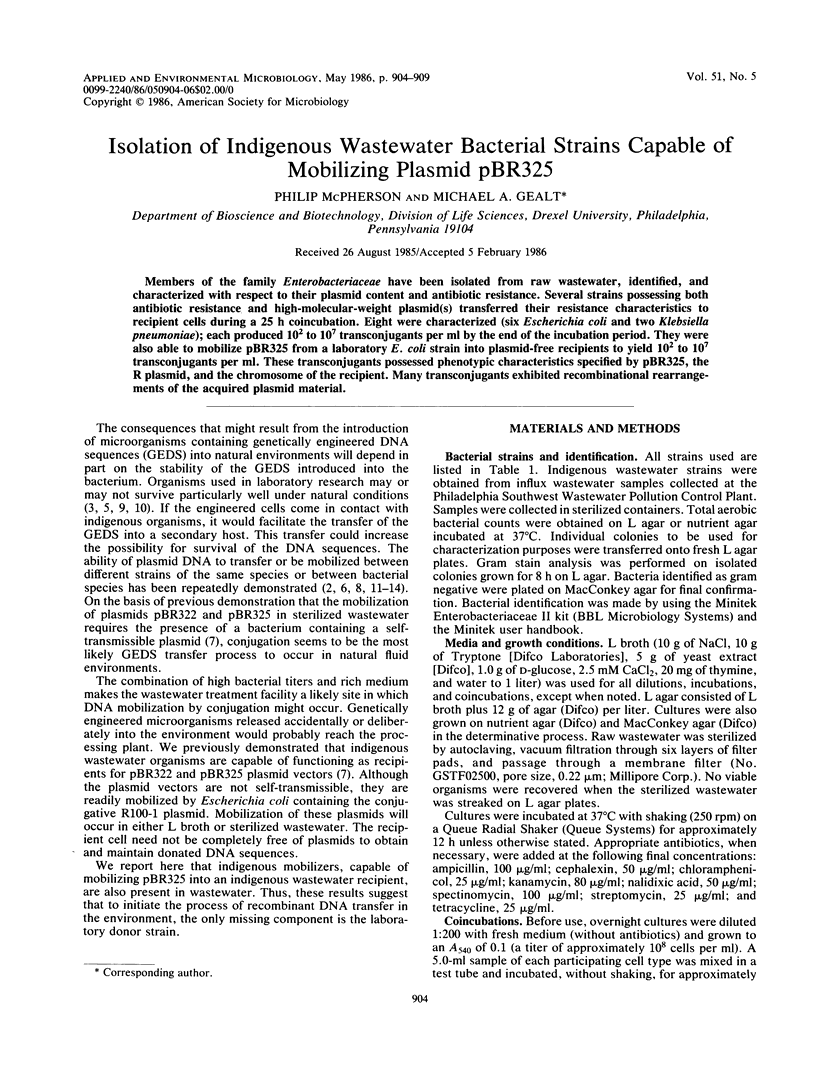
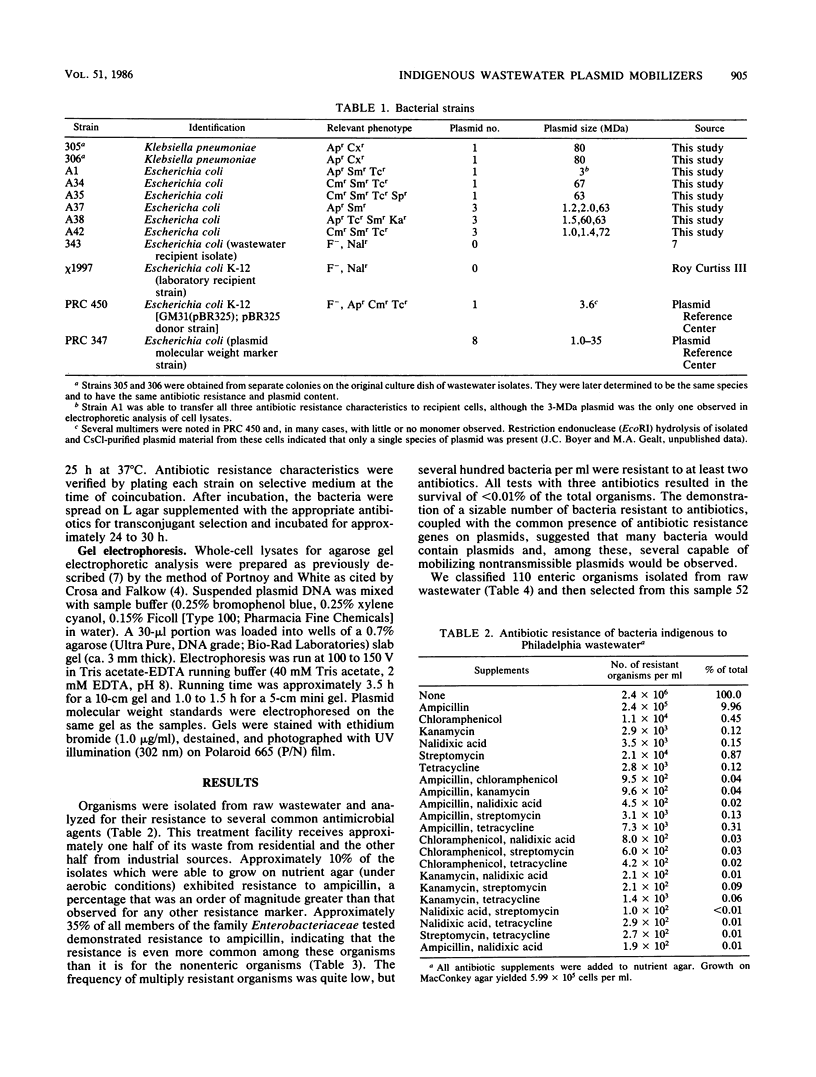
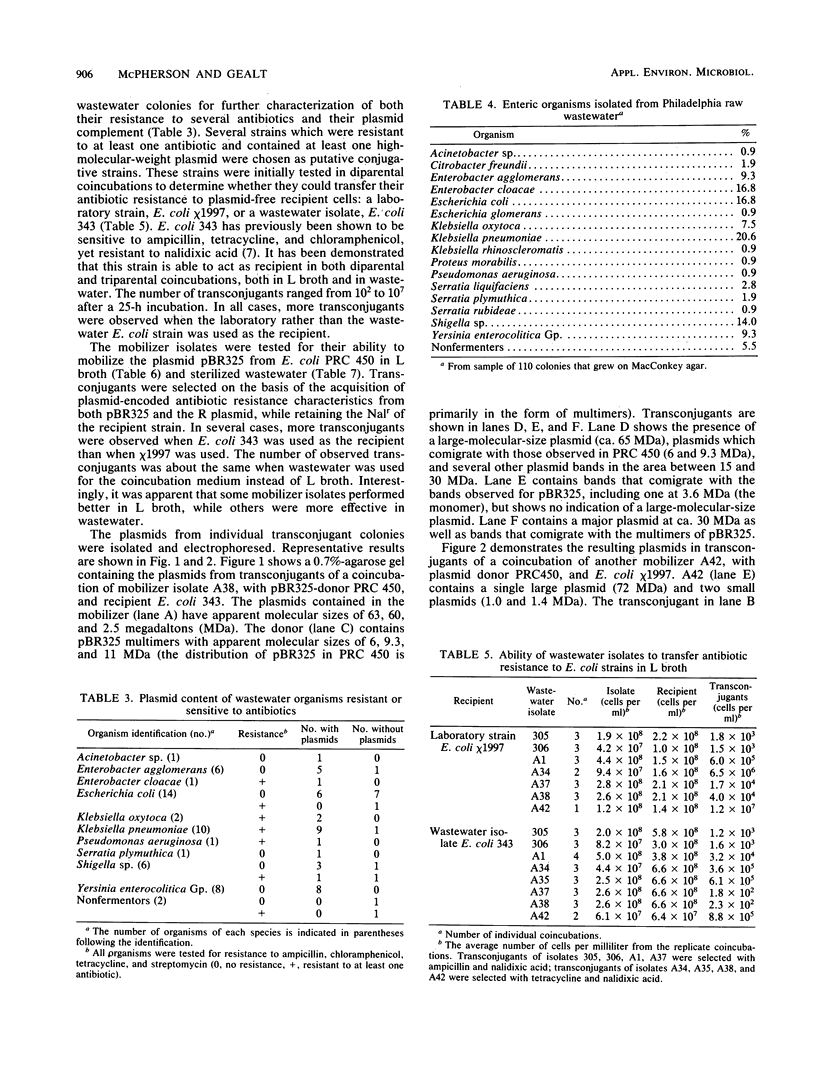
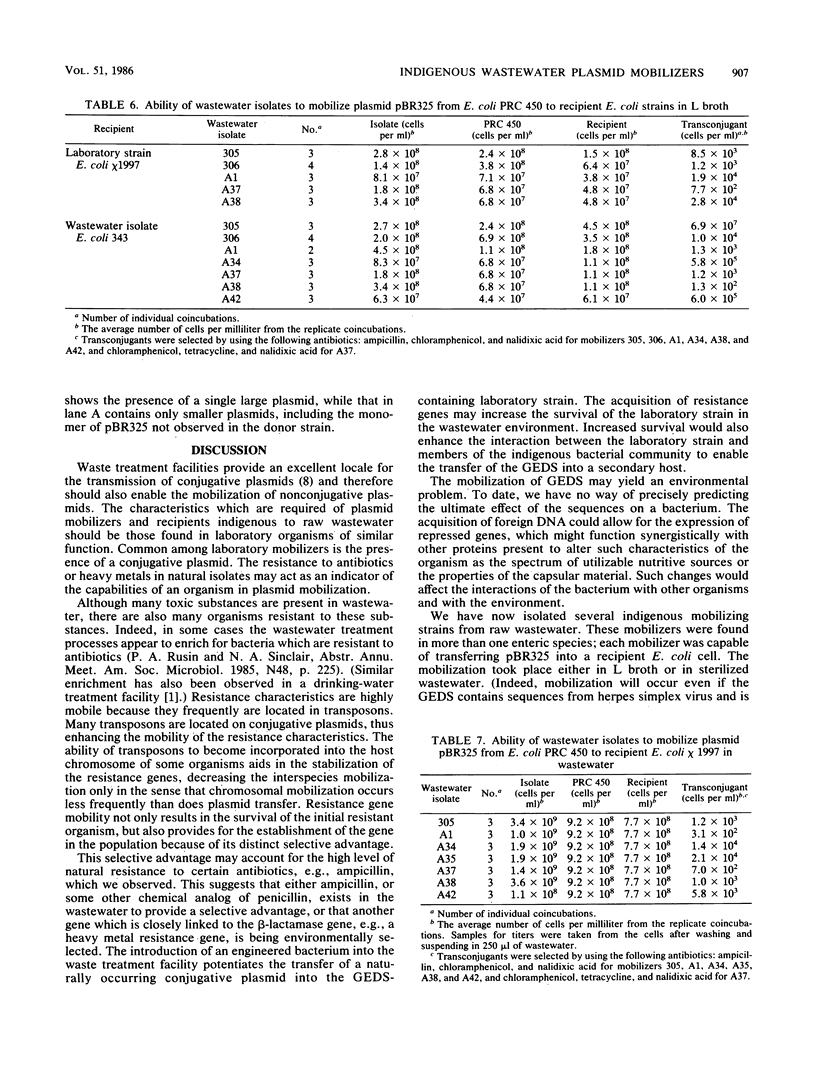
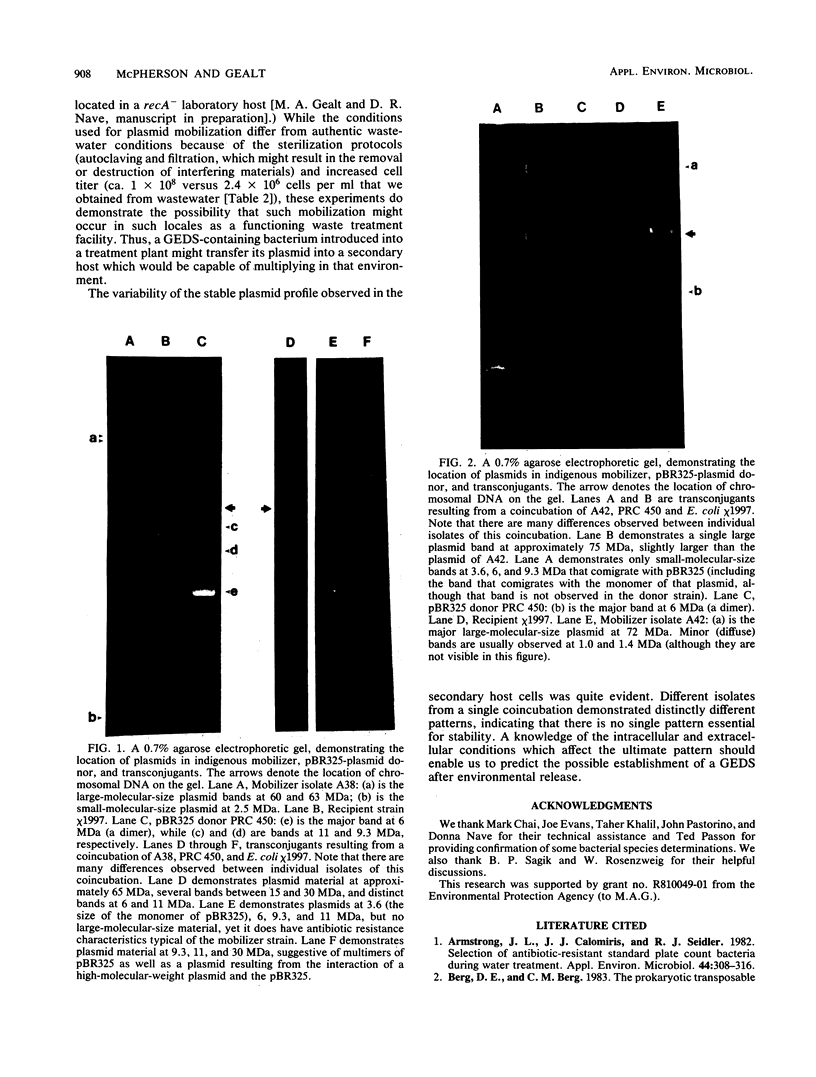
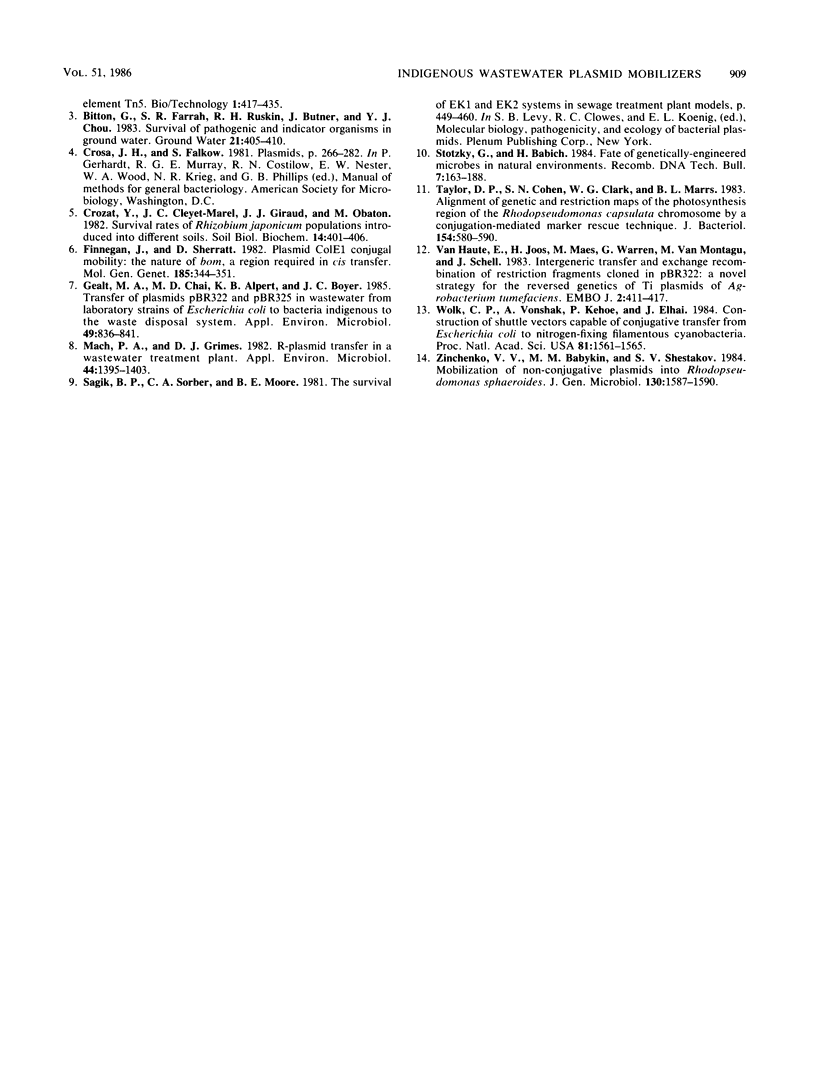
Images in this article
Selected References
These references are in PubMed. This may not be the complete list of references from this article.
- Armstrong J. L., Calomiris J. J., Seidler R. J. Selection of antibiotic-resistant standard plate count bacteria during water treatment. Appl Environ Microbiol. 1982 Aug;44(2):308–316. doi: 10.1128/aem.44.2.308-316.1982. [DOI] [PMC free article] [PubMed] [Google Scholar]
- Finnegan J., Sherratt D. Plasmid ColE1 conjugal mobility: the nature of bom, a region required in cis for transfer. Mol Gen Genet. 1982;185(2):344–351. doi: 10.1007/BF00330810. [DOI] [PubMed] [Google Scholar]
- Gealt M. A., Chai M. D., Alpert K. B., Boyer J. C. Transfer of plasmids pBR322 and pBR325 in wastewater from laboratory strains of Escherichia coli to bacteria indigenous to the waste disposal system. Appl Environ Microbiol. 1985 Apr;49(4):836–841. doi: 10.1128/aem.49.4.836-841.1985. [DOI] [PMC free article] [PubMed] [Google Scholar]
- Mach P. A., Grimes D. J. R-plasmid transfer in a wastewater treatment plant. Appl Environ Microbiol. 1982 Dec;44(6):1395–1403. doi: 10.1128/aem.44.6.1395-1403.1982. [DOI] [PMC free article] [PubMed] [Google Scholar]
- Stotzky G., Babich H. Fate of genetically-engineered microbes in natural environments. Recomb DNA Tech Bull. 1984 Dec;7(4):163–188. [PubMed] [Google Scholar]
- Taylor D. P., Cohen S. N., Clark W. G., Marrs B. L. Alignment of genetic and restriction maps of the photosynthesis region of the Rhodopseudomonas capsulata chromosome by a conjugation-mediated marker rescue technique. J Bacteriol. 1983 May;154(2):580–590. doi: 10.1128/jb.154.2.580-590.1983. [DOI] [PMC free article] [PubMed] [Google Scholar]
- Van Haute E., Joos H., Maes M., Warren G., Van Montagu M., Schell J. Intergeneric transfer and exchange recombination of restriction fragments cloned in pBR322: a novel strategy for the reversed genetics of the Ti plasmids of Agrobacterium tumefaciens. EMBO J. 1983;2(3):411–417. doi: 10.1002/j.1460-2075.1983.tb01438.x. [DOI] [PMC free article] [PubMed] [Google Scholar]
- Wolk C. P., Vonshak A., Kehoe P., Elhai J. Construction of shuttle vectors capable of conjugative transfer from Escherichia coli to nitrogen-fixing filamentous cyanobacteria. Proc Natl Acad Sci U S A. 1984 Mar;81(5):1561–1565. doi: 10.1073/pnas.81.5.1561. [DOI] [PMC free article] [PubMed] [Google Scholar]




